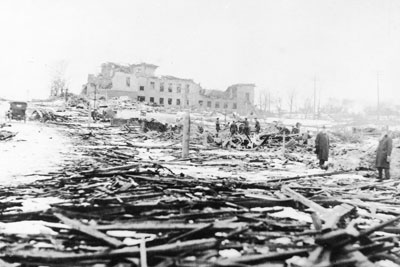
Normally I write about Texas, or at least the South. This time I want to share about a trip I took a few years ago to Canada.
It is so pretty, so cool in the summer, and so peaceful. At least it was until three events occurred.
On Sept. 11, 2001, the most tragic events occurred in New York City and other American cities. We all remember the horror and fear we faced. While Americans were the targets, the city of Halifax, Nova Scotia, played an important part in safety of our citizens who were on airliners.
If you remember, airports were immediately closed. But many passenger planes carrying those heading to the east coast of America were directed to Halifax. The airport there is very small, out in a rural area, and not prepared for the influx of passengers with no place to go. The good citizens of Halifax welcomed the surprised guests, shared homes, food and other comforts as the U. S. airports gradually opened.
That was just an example of the generosity of the Canadian city that had survived two disastrous occurrences in the 20th century.
The first happened on April 10, 1912, when a luxurious ocean liner rammed into an ice floe. We know about the wealthy passengers aboard the Titanic who took all the safety rafts, but what about the band members, the crew who steered the ship, who cooked and presented food, and those who clean the suites every morning? And the poor who saved money for a trip to America by staying in the lower part of the ship? Few, if any, survived.
When rescuers arrived, they found bodies of those people floating in the icy waters. No one survived. But this was 1912. No fancy funeral parlors, no place to embalm the deceased or even anywhere to bury the bodies.
But Halifax had such facilities, albeit miles away. Bodies were taken there to be prepared for burial. Many had identification on them that helped when the city began creating new cemeteries. One graveyard is particularly interesting. Those from the Titanic were buried together in a shape of tombstones arranged in the shape of a ship.
A few years later the Halifax Explosion was the largest man-made explosion prior to the atomic age. On the morning of Dec. 6, 1917, two ships collided in the harbor of Halifax resulting in a massive explosion that ultimately killed 2,000 people and injured thousands more.
This was at the critical point of World War I. Ships loaded with troops, munitions and supplies sailed in and out of Halifax harbor to support Allied war efforts. (Remember Canada was a British Colony fighting with the Allies and the United States had not yet entered the fight.) That morning the French freighter Mont Blanc prepared to join a military convoy that would escort it across the Atlantic. The ship was filled with tons of highly explosive materials including TNT, gasoline, picric acid and gun cotton.
Another ship, the Norwegian SS IMO, its mooring headed for open sea, and eventually New York. In a narrow channel the two ships collided, sparking a fire on the Mont Blanc. Realizing the danger, the crew of the Mont Blancevacuated into lifeboats and began to row to shore.
Their burning ship drifted until it brushed against a pier, setting the pier on fire. Curious onlookers attracted to the scene were there, when, at 9:04 that morning, the flames ignited the Mont Blanc, resulting in a massive explosion. Quickly the ship disappeared, leaving a shock wave that flattened 300 acres. The detonation caused a tsunami to roll over the waterfront.
The horror was unbelievable. During a cold winter, citizens of Halifax survived. Investigations to the cause determined that both ships were to blame. Urban planners replaced the ruins with a design consisting of homes, businesses and green space.
Today, Halifax is a lovely, clean city.
